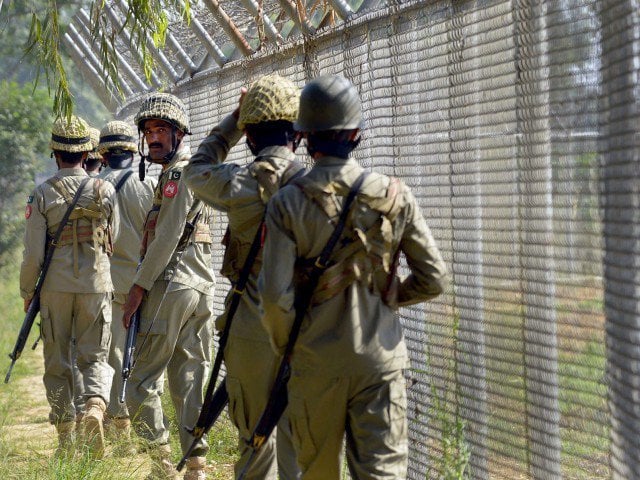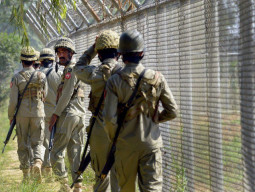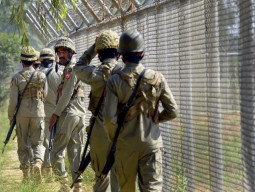
The latest civilian deaths along the Line of Control (LoC) afford a grim prospect for any possible détente between India and Pakistan as the public uprising in Kashmir continues into the sixth month. The failure of the Indian occupation regime to control the uprising despite a litany of new repressive measures that violate all international human rights and humanitarian norms has forced Indian authorities to introduce new tools and tactics to shift public attention and focus away from the mass rebellion. One such tactic is escalating tensions along the LoC and attacking civilians. Additionally, Prime Minister Narendra Modi, a Hindu extremist who rode to popularity by spewing venom against Pakistan and instigating anti-Muslim pogroms that killed thousands, wants to continue to peddle hate and act vengeful in a bid to arrest his sagging popularity.
8 killed as Indian forces target passenger bus near LoC
The recent skirmish in Neelum Valley in which the Indian border forces attacked a civilian passenger vehicle and a rescue ambulance killing a dozen civilians and injuring several others is a serious escalation and a major violation of the now defunct 2003 ceasefire agreement. The incident came a day after India claimed its soldiers had been killed by Pakistani soldiers and threatened “retribution”. While it is hard to verify claims of “unprovoked firing” by the warring parties, it is clear the Indian troops are deliberately targeting civilian populations with an aim to obliterate lives and livelihoods inside Azad Jammu and Kashmir (AJK). This pattern of mass murder and destruction of properties and livelihoods is consistent with the behaviour of Indian troops inside occupied Jammu and Kashmir.
India violated Line of Control ceasefire 103 times, Senate told
Since July this year, Indian armed forces – from military to paramilitary soldiers – have killed more than 100 civilians, most of them in a brutal fashion, while injuring thousands. The police and paramilitary soldiers have used hunting shotguns and targeted youth in their eyes creating a new milestone of repression in the form of mass blinding of a besieged population. In comparison, the Indian army has been involved in firing at innocent civilians, attacking houses and public properties, and destroying crops and agricultural produce. In one gruesome incident last August, two days after India celebrated its 69th Independence Day, its army attacked Sharshali village in Khrew on the outskirts of the capital Srinagar and beat the youth in the village for their participation in pro-freedom peaceful demonstrations. They picked up Shabir Ahmad Mangoo, a 30-year-old English lecturer, dragging him out of his house in front of his wailing wife and mother. He was beaten so ruthlessly that he died in front of his siblings who were also tortured and beaten mercilessly. Reporting the incident, newspapers quoted hospital sources saying large number of youth were critically injured and had to be shifted to a major hospital in the capital city for specialised treatment.
Obama’s top aide voices concern over LoC tensions
As details of the gruesome death of Shabir Mangoo became known, the Indian army issued a customary statement of regret and a routine announcement of an inquiry, piling one more on hundreds of previous inquiries that remain unfinished. Alongside, it continued its repressive campaign of targeting civilians without any remorse. Now this campaign of targeting civilian populations has been widened to cover Kashmiris in AJK, particularly along the LoC. According to Indian media reports, the Indian army did convey customary regret over civilian deaths in the Neelum Valley incident but refused to accept the responsibility for their killing. This is unfortunate that despite being one of the largest forces in the world, the Indian army is displaying a consistent pattern of targeting civilian populations in contravention of the International Humanitarian Law and the Geneva Conventions.
The Modi regime is carrying out a concerted campaign of whipping up war hysteria in utter desperation as it fails to compromise Kashmiri demands of freedom through repression and to isolate Pakistan. There are real dangers that this vicious campaign will continue and may therefore trigger a nasty surprise that could widen the theatre of war causing further destruction. Prime Minister Nawaz Sharif is right in pointing out India’s inability to comprehend the gravity of the situation. Under such circumstances, it puts more responsibility on the Pakistani side to respond carefully to avoid full-scale escalation. Equally, the government must pursue the matter internationally with more vigour and determination as bilateralism in dealing with Kashmir or India has totally failed to generate any hopes of long-term peace.
Murtaza Shibli is a journalist, author and communications and security specialist. He keeps shuttling between London, Lahore and Srinagar, Kashmir. He tweets @murtaza_shibli



































































COMMENTS
Comments are moderated and generally will be posted if they are on-topic and not abusive.
For more information, please see our Comments FAQ